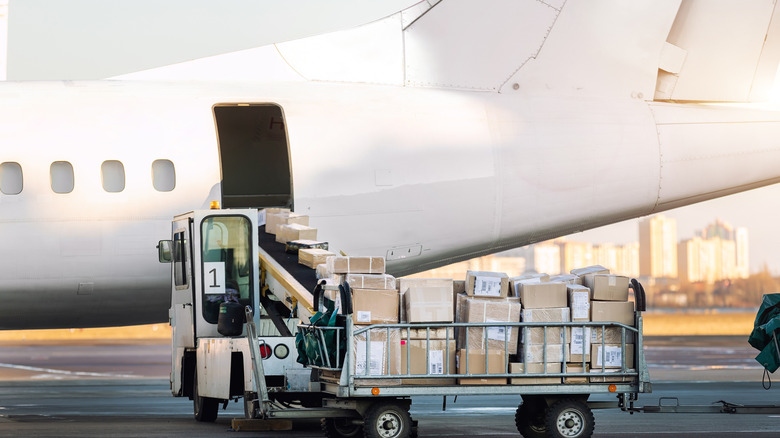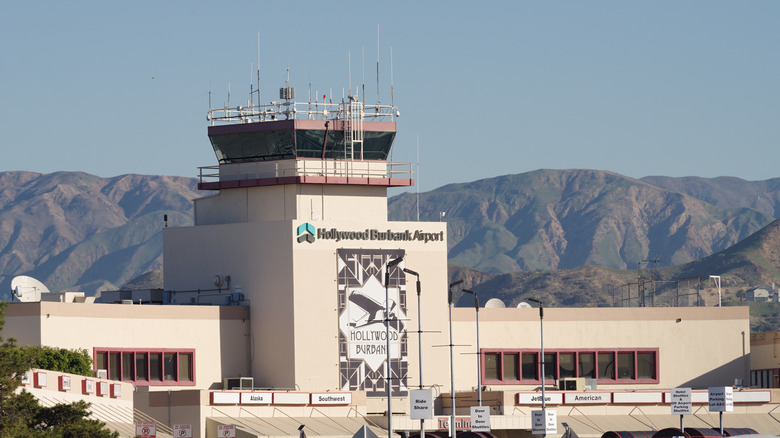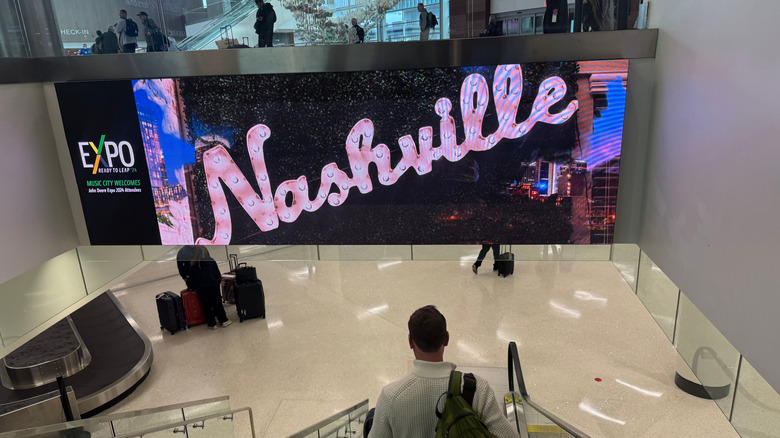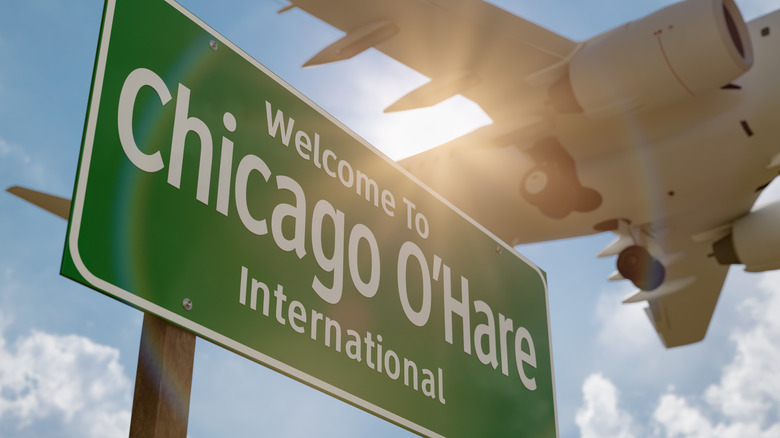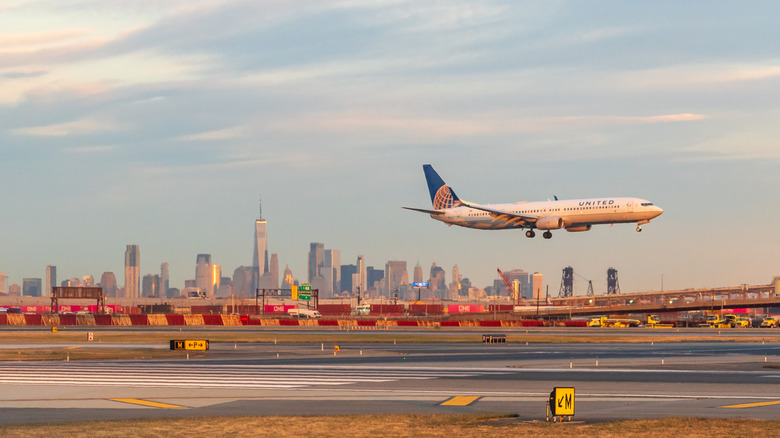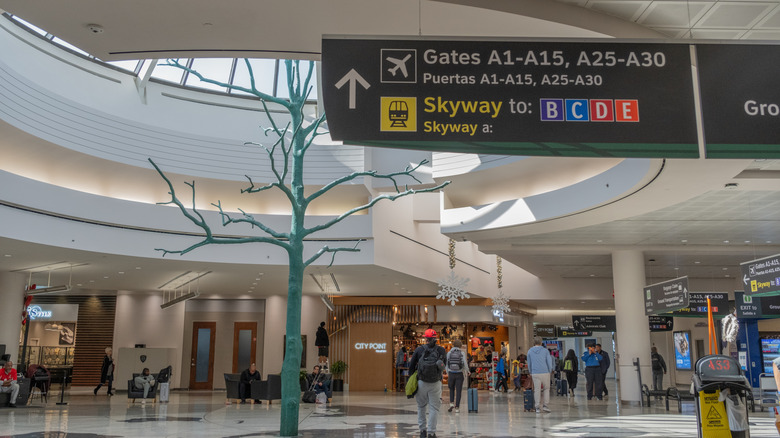5 US Airports Are Struggling Big Time During The Government Shutdown
Air travel is already a mixed bag — from rising ticket prices to overcrowded terminals, getting from point A to point B can be a hassle, even in the best of times. But for the past month, there's been an even bigger hiccup: the ongoing U.S. federal government shutdown, which has affected travel plans across the country. Since the shutdown began on October 1, 2025, many Federal Aviation Administration (FAA) and Transportation Security Administration (TSA) employees have been furloughed or deemed "essential," meaning they still have to report to work without pay until Congress passes a spending bill. Air Traffic Control (ATC) was already facing a staffing crisis pre-shutdown, but shortages have now reached critical levels, causing the FAA to ground routes, delay flights, and stretch remaining controllers thin. Morale has dropped, leading to longer security lines, overwhelmed terminals, and safety concerns, and controllers missed receiving an entire paycheck on October 28.
On October 26, the FAA grounded flights bound for Los Angeles International Airport (LAX) for about two hours because of ATC staffing shortages. The same weekend, Reagan National Airport (DCA) in Virginia also sustained ground delays. According to CNN, 264 instances of staffing problems have been reported to the FAA since the beginning of the shutdown — over quadruple the number of reported issues at the same time last year.
Although it's difficult to quantify exactly which airports or routes have been hardest hit — few have escaped unscathed, and the numbers keep changing — some of the notable stories of the hardest-hit airports during the shutdown include major hubs like Newark, Hollywood Burbank, and Nashville International. Looking ahead, travelers should expect longer lines, fewer on-time departures, and a strained system until the government reopens. For now, pack snacks and an extra phone charger.
Hollywood Burbank Airport (BUR)
"Clearance is closed, ground is closed, local is closed," said a recording played for pilots arriving to Hollywood Burbank Airport on October 6, 2025. This message continued: "The tower is closed due to staffing. Please contact SoCal on the 800-number." According to audio captured by LiveATC.net and reported by ABC7 News, this message was broadcast over the tower frequency as the airport's Air Traffic Control towers were left completely unstaffed for roughly six hours, just days after the federal shutdown began. Flights were grounded and delayed for an average of 2.5 hours. Pilots had to coordinate with each other via radio, further complicating dangerous maneuvers, until San Diego-based Southern California Terminal Radar Approach Control (TRACON) stepped in remotely to help manage traffic.
That same day, more than 6,000 flights were reportedly delayed nationwide, and Transportation Secretary Sean Duffy confirmed in a press conference that the number of air traffic controllers calling out of work had increased since the shutdown, a trend which continues. While operations at Hollywood Burbank have resumed, the strain remains, especially as nearby Los Angeles International (LAX) faces similar staffing shortages and delays. California Governor Gavin Newsom publicly criticized President Donald Trump and Secretary Duffy on Twitter for their handling of the shutdown and its fallout across the state's airports.
Nashville International Airport (BNA)
Shortly after Hollywood Burbank Airport faced zero ATC staff on site in early October, Nashville experienced a controller shortage of its own. On October 7, the FAA informed the airport that flights would be reduced until further notice, and that ground delay became the first full ground stop during the government shutdown, per NPR. Note that not all delays are ground stops — a ground stop is a mandatory halt on flights to or from a particular destination, issued by the FAA when a system is overwhelmed. A regular delay is more minor and usually allows some flow of traffic.
Nashville's approach facility, which manages planes coming in and out of the area, was closed for five hours, delaying flights by an average of two hours. Compounding the problem, the airport completely closed its Concourse A for a pre-planned demolition just days before the government shutdown began. Though operations largely returned to normal the following day, the FAA reported 263 delayed flights impacting nearly 40,000 passengers.
Chicago O'Hare International Airport (ORD)
ORD is one of the busiest airports in the country, averaging about 1,000 flights in and out of its airspace each day. As such, it's fairly well equipped to deal with emergencies, but the government shutdown has affected its operations. On October 7, it faced the most air traffic control shortages in the country at that time, according to FlightAware (via SAN). Delays averaged 41 minutes, but the duration of the staffing shortage lasted for several hours. The story in the Windy City echoed most airports' tales: Already short-staffed controllers had called in sick, decreasing the staff even further.
Chicago's other airport, Midway International Airport (MDW), is also experiencing delays including 45% delays at Southwest, its flagship carrier, as of October 28 (via AXIOS Chicago). This mirrors a similar pattern across the country. According to Reuters, the U.S. Department of Transportation noted 44% of delays that took place on October 26 were directly related to controller absences; typically, that number is closer to 5%. The FAA is short by roughly 3,500 workers, and those who are working have been working mandatory overtime. However, reports before the shutdown even began claimed the department was already short staffed by about 3,000.
Newark Liberty International Airport (EWR)
Newark was already making the wrong kinds of headlines this summer thanks to cancellations and delays — well before the government shutdown began. As one of the nation's busiest airports, the New Jersey hub was already dealing with staffing shortages that, combined with technology failures, caused massive problems and a domino effect. This made traveling out of Newark a stressful experience, which is really saying something, considering the airport was already ranked one of the worst in the U.S.
Now that the government shutdown's in full swing, Newark has certainly been among the hardest hit, averaging two-hour delays on October 26 and sustaining as long as an 11-hour delay, per the FAA. A total of 234 flights were delayed that day — a 38% rate — and 10 were canceled. Those delays spilled over on Monday and even into Tuesday, as Hurricane Melissa in the Caribbean threatened to ground flights. "Multi-taxi" congestion — when multiple aircraft try to use the same runways and taxi spaces at the same time — has also caused delays at EWR, increasing the risk of accidents.
Besides the impact on travelers, essential workers at EWR have been personally impacted by the ongoing shutdown. CBS News reported that some of the unpaid employees are receiving help in the form of boxes of groceries or other goods from a local food pantry, as they were set to miss a paycheck.
George Bush Intercontinental Airport (IAH)
Airports across the country have been impacted by the government shutdown, making it hard to narrow the list down to just five. But to round out the top five, major metro hub George Bush Intercontinental Airport in Houston (IAH) takes the cake. It's a huge hub not only regionally and nationally but also to Latin America and beyond. But on October 21, the FAA issued ground stops, and more than 160 flights were delayed — 12% of flights — with even more impacted across the city at William P. Hobby Airport, disruptions that were attributed to air traffic control shortages. Again on October 23, 13% of the 5,000 delays recorded by FlightAware were out of Houston, whereas 15% were combined from LaGuardia, Newark, and Reagan airports.
Air traffic controllers' crisis could force an end to the government shutdown. The aviation system is one of the few places where the public feels the government influence the most visibly, and as flight disruptions have only grown, concerns about safety and outrage over unpaid wages have rippled throughout the country. Not only passengers but also cargo and business have been affected. During the last government shutdown from 2018 to 2019, flight disruptions were so significant that they finally convinced politicians to reopen the government after 35 days. As 2025's shutdown nears that number, this straining situation could have a big impact.
